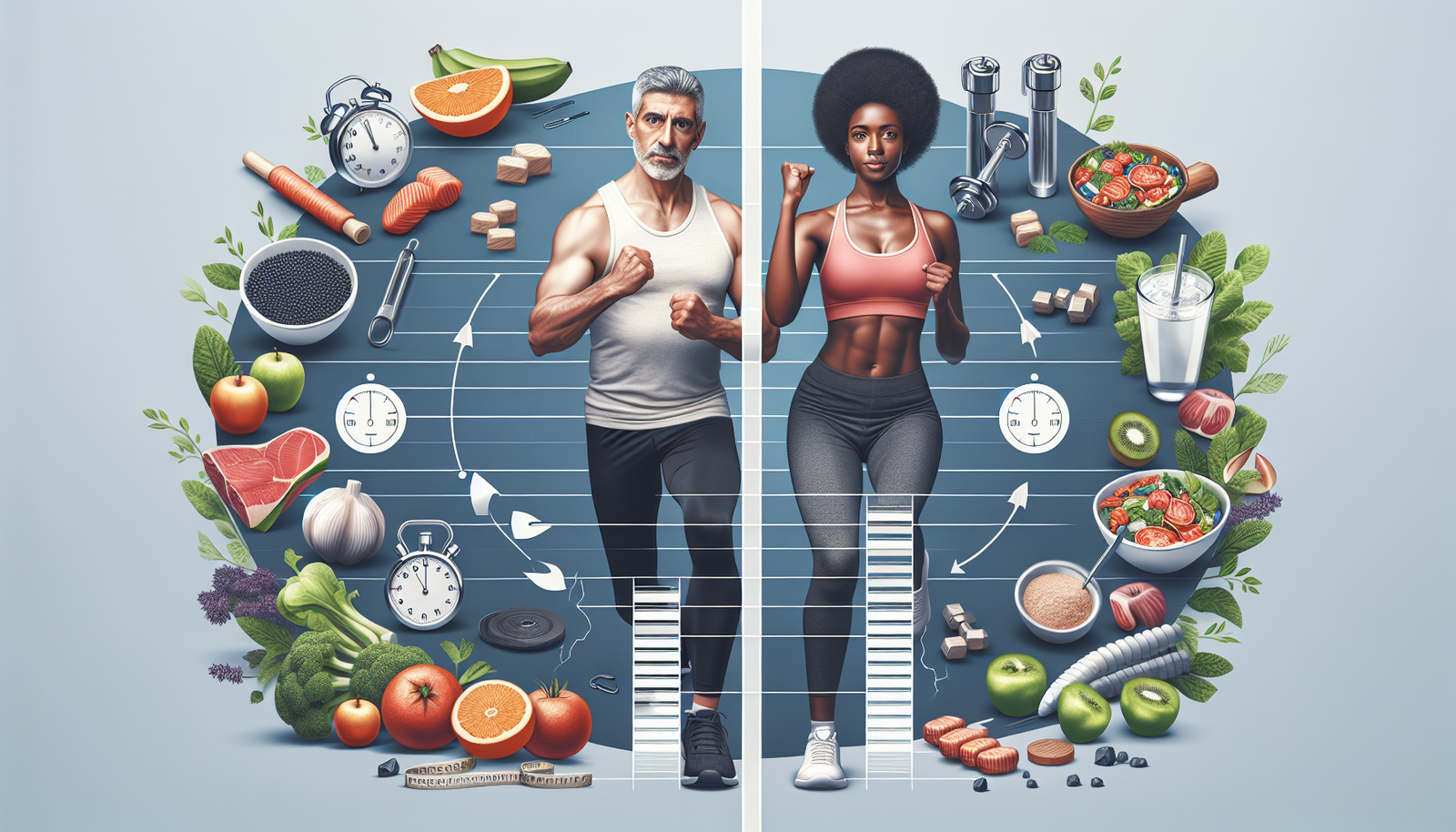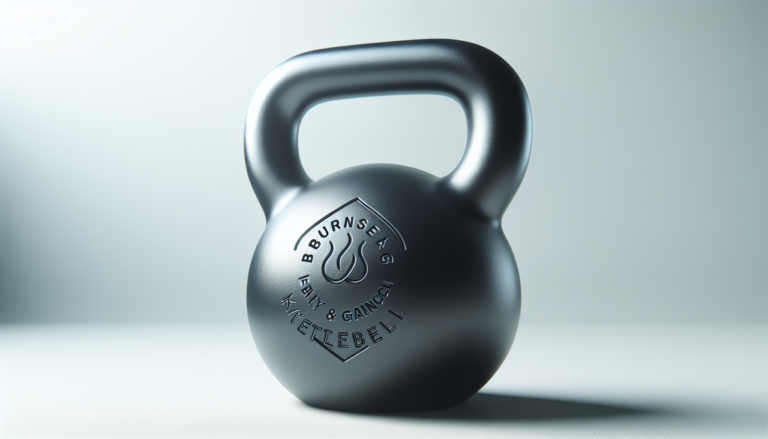How To Lose Belly Fat And Gain Muscle
If you’ve been struggling to shed those stubborn belly fat and build lean muscle, then this article is for you. In this guide, we will be sharing effective tips and techniques on how to lose belly fat and gain muscle. Say goodbye to endless hours of crunches and embrace a smart and holistic approach to achieve your fitness goals. Whether you’re a beginner or an experienced fitness enthusiast, these strategies will help you transform your physique and boost your overall health. So, get ready to embark on a journey towards a stronger, fitter, and more confident version of yourself.

A Balanced Diet
Maintaining a balanced diet is crucial when it comes to achieving your weight loss and muscle gain goals. By fueling your body with the right nutrients, you can optimize your metabolism and support muscle growth. Here are some key components to focus on when planning your meals.
Plan Your Meals
Planning your meals in advance can take the guesswork out of what to eat and help you make healthier choices. When planning, ensure that your meals include a balance of protein, healthy fats, and complex carbohydrates. Incorporate a variety of fruits, vegetables, lean meats, and whole grains to provide your body with the necessary nutrients.
Control Portion Sizes
Controlling portion sizes is essential to prevent overeating and to maintain a calorie deficit for fat loss. Use smaller plates and bowls to give the illusion of a fuller plate. Focus on listening to your body’s hunger and fullness cues and stop eating when you feel satisfied rather than overly full.
Include Protein
Protein is vital for muscle growth and repair. Include lean sources of protein such as chicken, fish, tofu, beans, and lentils in your meals. Aim to consume protein with every meal to ensure your body has a steady supply of amino acids needed for muscle recovery.
Eat Healthy Fats
Healthy fats are an important part of a balanced diet. Incorporate sources of monounsaturated and polyunsaturated fats such as avocados, nuts, seeds, and olive oil. These fats provide essential nutrients and help to keep you feeling full and satisfied.
Choose Complex Carbohydrates
Complex carbohydrates are a great source of energy and provide essential nutrients and fiber. Opt for whole grains like brown rice, quinoa, oats, and whole wheat products instead of refined carbohydrates like white bread and pasta. Complex carbs take longer to digest, keeping you fuller for longer and providing sustained energy throughout the day.
Exercise Routine
Implementing an effective exercise routine is crucial for losing belly fat and gaining muscle. By combining different types of exercises, you can maximize your results and improve overall strength and endurance.
Cardiovascular Exercise
Cardiovascular exercises like running, biking, swimming, or using an elliptical machine are great for burning calories and losing belly fat. Aim for at least 150 minutes of moderate-intensity cardio or 75 minutes of vigorous-intensity cardio each week. Remember to warm up before each session and gradually increase the intensity as your fitness level improves.
Strength Training
Strength training is essential for building lean muscle mass and increasing metabolism. Incorporate exercises that target all major muscle groups, such as squats, deadlifts, chest presses, rows, and shoulder presses. Aim for 2-3 strength training sessions per week, allowing for proper rest and recovery between workouts.
High-Intensity Interval Training (HIIT)
HIIT workouts involve short bursts of intense exercise followed by brief recovery periods. This type of training is excellent for burning fat while preserving muscle mass. Include exercises like burpees, mountain climbers, jumping jacks, and sprints in your HIIT sessions. Start with a 1:1 ratio of work to rest and gradually increase the intensity and duration as you progress.
Core Exercises
A strong core is essential for overall body stability and improved athletic performance. Incorporate exercises that target your abdominal muscles, such as planks, Russian twists, bicycle crunches, and leg raises. Aim for 2-3 core workouts per week, focusing on proper form and progression to challenge your core muscles.
Lifestyle Changes
Making certain lifestyle changes can greatly impact your ability to lose belly fat and gain muscle. By managing stress levels, getting sufficient sleep, staying hydrated, and reducing alcohol intake, you can create a supportive environment for achieving your fitness goals.
Manage Stress Levels
Chronic stress can lead to weight gain and hinder your progress. Implement stress management techniques such as meditation, deep breathing exercises, yoga, or engaging in hobbies. Take time to relax and unwind, allowing your body to recover from daily stressors.
Get Sufficient Sleep
Adequate sleep is essential for muscle recovery and overall well-being. Aim for 7-9 hours of quality sleep each night to promote optimal hormone function and reduce cravings for unhealthy foods. Establish a consistent sleep schedule, create a relaxing bedtime routine, and ensure your sleeping environment is comfortable and free from distractions.
Stay Hydrated
Proper hydration is vital for overall health and supports various bodily functions, including digestion, metabolism, and energy production. Aim to drink at least 8 cups (64 ounces) of water per day. Carry a reusable water bottle with you to stay hydrated throughout the day, especially during and after exercise.
Reduce Alcohol Intake
Alcohol consumption can hinder weight loss and muscle gain due to its high calorie content and impact on hormone regulation. Limit your alcohol intake and opt for healthier alternatives like sparkling water with a splash of citrus or herbal tea. When consuming alcohol, do so in moderation and be mindful of your overall calorie intake.
Supplements and Nutrition
Supplements can be a helpful addition to your diet and exercise routine, but they should not replace a balanced diet. Speak to a healthcare professional before starting any new supplements. Consider the following options to support your weight loss and muscle gain goals.
Consider Protein Powder
Protein powder can be a convenient way to increase your protein intake, especially for those with busy lifestyles. Choose a high-quality protein powder that fits your dietary preferences and goals. Whey protein, plant-based protein, or collagen protein are popular options. Be mindful of added sugars or unnecessary fillers and choose a brand with good reviews and certifications.
Consume Fiber Supplements
Fiber supplements can help regulate digestion and promote feelings of fullness. Incorporate fiber-rich foods like fruits, vegetables, and whole grains into your diet. If needed, consider adding a fiber supplement like psyllium husk or glucomannan. Start with a low dose and gradually increase as tolerated, and always ensure adequate water intake when consuming fiber supplements.
Opt for Green Tea or Caffeine
Green tea and caffeine have been shown to boost metabolism and support fat loss. Incorporate green tea into your daily routine or consume caffeine in moderation from sources like coffee or pre-workout supplements. Be mindful of potential side effects and avoid excessive caffeine consumption, especially late in the day to prevent sleep disturbances.
Include Omega-3 Fatty Acids
Omega-3 fatty acids are essential for overall health and can support weight loss and muscle gain. Include fatty fish like salmon, sardines, or take fish oil or algae-based supplements to ensure an adequate intake. Omega-3s have anti-inflammatory properties, support heart health, and may aid in reducing belly fat.

Track Progress
Tracking your progress is essential to stay motivated and make adjustments to your diet and exercise routine as needed. Here are some methods to monitor your progress effectively.
Keep a Food Diary
Keeping a food diary can help you become aware of your eating habits and identify areas for improvement. Write down everything you eat and drink, including portion sizes. Note how you felt before and after each meal and any cravings or emotional triggers. Review your food diary regularly to assess patterns and make adjustments.
Measure Body Composition
Scale weight alone does not provide a complete picture of your progress. Consider measuring body composition using methods such as skinfold calipers, a bioelectrical impedance scale, or a DEXA scan. These methods can provide insights into changes in body fat percentage and muscle mass, which may not be reflected in scale weight alone.
Monitor Strength and Endurance
Strength and endurance improvements are key indicators of progress. Keep track of the weights you lift, the number of repetitions performed, and any improvements in exercise duration or intensity. Regularly challenge yourself by increasing weights, repetitions, or reducing rest periods to ensure constant progress.
Stay Motivated
Staying motivated throughout your fitness journey can be challenging at times. By setting realistic goals, finding an accountability partner, rewarding yourself, and continually educating yourself, you can maintain a positive mindset and stay on track.
Set Realistic Goals
Setting realistic and achievable goals is crucial for staying motivated. Break your overall goal into smaller, more manageable milestones. Celebrate each milestone reached to maintain motivation and hold yourself accountable to continue working towards your ultimate goal.
Find an Accountability Partner
Having an accountability partner can provide support and encouragement when times get tough. Choose someone who shares similar health and fitness goals or consider joining a fitness group or online community. Share your progress, celebrate milestones together, and hold each other accountable to stay on track.
Reward Yourself
Rewarding yourself for reaching milestones can help maintain motivation and make your journey more enjoyable. Treat yourself to a massage, a new workout outfit, or a small indulgence that aligns with your health goals. Just be mindful not to use food as a reward, as it may trigger unhealthy eating habits.
Continually Educate Yourself
Continually educating yourself on nutrition, exercise, and mindset is important for long-term success. Stay curious and seek out reputable sources of information such as books, podcasts, or online courses. Knowledge empowers you to make informed decisions and adapt your approach as needed.
Seek Professional Guidance
If you feel overwhelmed or unsure about the best approach to losing belly fat and gaining muscle, don’t hesitate to seek professional guidance. Consulting a dietitian or nutritionist can help you create a personalized meal plan that meets your specific needs. Consider hiring a personal trainer to design a workout program tailored to your goals. If you have any health concerns, it’s always a good idea to visit a doctor for medical advice.
Consult a Dietitian or Nutritionist
Dietitians and nutritionists are experts in the field of nutrition and can provide personalized guidance based on your unique needs and goals. They can help you develop a sustainable eating plan, address any nutrient deficiencies, and educate you on portion sizes and food choices.
Hire a Personal Trainer
A personal trainer can provide guidance and accountability when it comes to your exercise routine. They can help you design a workout plan that aligns with your goals, demonstrate proper form, and provide motivation to push past plateaus and challenges.
Visit a Doctor for Medical Advice
If you have any underlying medical conditions or concerns, it’s essential to consult a doctor before making significant changes to your diet or exercise routine. They can provide you with personalized advice, monitor your progress, and ensure that your approach is safe and suitable for your specific circumstances.
Avoid Common Pitfalls
To keep your progress on track, it’s important to avoid common pitfalls that can hinder your weight loss and muscle gain efforts. By steering clear of fad diets, skipping meals, overdoing cardio, and preventing overtraining, you can maintain a sustainable and healthy approach.
Don’t Fall for Fad Diets
Fad diets often promise rapid weight loss but are typically unsustainable and can lead to nutrient deficiencies or negative effects on metabolism. Instead of following restrictive diets, focus on creating a balanced and enjoyable eating plan that provides adequate nutrition and is sustainable for the long term.
Don’t Skip Meals
Skipping meals can slow down your metabolism, increase cravings, and make it more challenging to control portion sizes. Aim to eat regular meals and snacks throughout the day to keep your energy levels stable and prevent excessive hunger. Include a balance of macronutrients in each meal to support muscle growth and prevent muscle breakdown.
Don’t Overdo Cardio
While cardio is essential for weight loss, overdoing it can lead to muscle loss and hinder your progress. Balance your cardio sessions with strength training to preserve muscle mass, boost metabolism, and promote overall body composition changes. Incorporate different types of cardio like steady-state, interval training, and low-impact options to keep things varied and enjoyable.
Avoid Overtraining
Pushing yourself too hard and not allowing enough time for recovery can lead to overtraining and hinder your progress. Include rest days in your exercise routine to give your body time to repair and rebuild. Listen to your body’s signals and adjust your workouts as needed. Proper nutrition, sleep, and stress management also play a crucial role in preventing overtraining.
Maintain Consistency
Consistency is key when it comes to achieving long-term results. By sticking to your plan, consistently monitoring progress, and adapting when necessary, you can stay on track towards your goals.
Stick to Your Plan
Create a realistic plan that you can stick to for the long term. Consistently follow your meal plan, exercise routine, and lifestyle changes. Even if progress seems slow at times, trust the process and stay committed to your goals.
Consistently Monitor Progress
Regularly assess your progress by tracking measurements, body composition, and strength and endurance improvements. Reflect on the changes you’ve made and the progress you’ve achieved. Celebrate milestones, evaluate areas for improvement, and stay motivated by recognizing the positive changes you’ve made.
Adapt and Modify When Needed
No one plan fits all, and everyone’s body is unique. Pay attention to how your body responds to different foods, exercises, and lifestyle changes. If something isn’t working, be open to adapting and modifying your approach. Listen to your intuition, seek professional advice if needed, and make adjustments that align with your individual needs.
Celebrate Success
Throughout your journey to lose belly fat and gain muscle, don’t forget to celebrate your achievements. Acknowledge how far you’ve come, enjoy the process, and maintain a positive mindset.
Acknowledge Achievements
Take the time to acknowledge and celebrate each milestone reached. Recognize the progress you’ve made, whether it’s a drop in body fat percentage, increased strength, or improved energy levels. Celebrate your hard work and dedication, no matter how big or small the accomplishment.
Enjoy the Journey
Remember that losing belly fat and gaining muscle is a journey that should be enjoyed. Embrace the process, enjoy trying new recipes, exploring different types of exercises, and challenging yourself. Focus on the positive changes happening within your body and keep an optimistic outlook.
Maintain a Positive Mindset
A positive mindset is crucial for long-term success. Believe in yourself and your ability to reach your goals. Surround yourself with supportive individuals, practice self-compassion, and focus on the improvements you’ve made. Stay motivated by visualizing your success and keeping a positive attitude throughout your fitness journey.
By implementing a balanced diet, designing an effective exercise routine, making lifestyle changes, considering supplements and nutrition, tracking progress, staying motivated, seeking professional guidance, avoiding common pitfalls, maintaining consistency, and celebrating success, you are well on your way to losing belly fat and gaining muscle. Remember, it’s a journey, and with consistency, patience, and dedication, you can achieve your desired results and enjoy a healthier, stronger, and more confident you.






